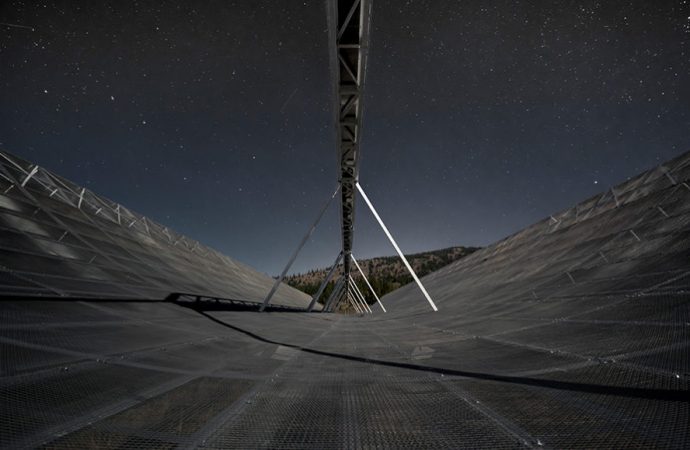A blast of radio waves from deep space appears to be on a 16-day cycle
Source: Science News
A periodic flurry of radio waves from some unknown object in deep space could help astronomers figure out what’s triggering similar radio bursts in other galaxies.
Since 2007, researchers have cataloged over 100 fast radio bursts, or FRBs, coming from every direction in the sky. But it’s unknown what causes these radio bursts. Only 10 have been seen to repeat, and none of those had exhibited any sort of steady tempo — until now.
One of the known repeaters has a relatively brief window of activity about every 16 days, researchers report January 28 at arXiv.org. That means something about the source or its environment is reliably controlling the burst activity, a potential clue to the true nature of these enigmatic objects.
Dongzi Li, an astrophysicist at the University of Toronto, and colleagues found the pattern in data from the Canadian Hydrogen Intensity Mapping Experiment, or CHIME, radio telescope in British Columbia. They determined that the FRB blasts out about one to two radio bursts per hour for four days and then goes silent for just over 12 days before usually repeating the cycle.
“This is very significant,” says Duncan Lorimer, an astrophysicist at West Virginia University in Morgantown and co-discoverer of the first FRB. “It’s potentially going to take us in an interesting direction to get to the bottom of these repeaters.”
One possible explanation for the periodicity is that the FRB is orbiting something else, perhaps a star or black hole. In that case, the 16-day period might reveal how often the source of the radio waves is pointed toward Earth.
Alternatively, stellar winds from a companion might periodically boost or block the radio pulses. Winds might also explain why not every 16-day cycle produces bursts: If the companion occasionally belches out more material than usual, that could mask the FRB’s signal.
Either explanation implies that repeating FRBs — or at least, this one — might come paired with something else.
Li and her colleagues aren’t ready to rule out stand-alone objects, where the 16-day period might arise from the FRB rotating or wobbling. But that scenario is a bit tougher to reconcile with the data. For example, one popular FRB culprit is a type of highly magnetic neutron star known as a magnetar. But known magnetars in our galaxy spin around once every 12 seconds or less, the team notes, a far cry from the fortnight needed for this FRB.
This particular radio burst was also recently traced to a star-forming region in a spiral galaxy nearly 500 million light-years away from Earth. Future scans of its home with telescopes sensitive to other electromagnetic radiation, such as X-rays or gamma rays, might whittle down the list of suspects and move astronomers closer to solving this cosmic mystery.
There’s also hope that this find is just the first of many periodic FRBs to be detected. “There’s nothing particularly special about this repeater,” Lorimer says. “The fact that they detected periodicity on this one hints that other ones will have periodicity as well.”
Source: Science News

































Leave a Comment
You must be logged in to post a comment.